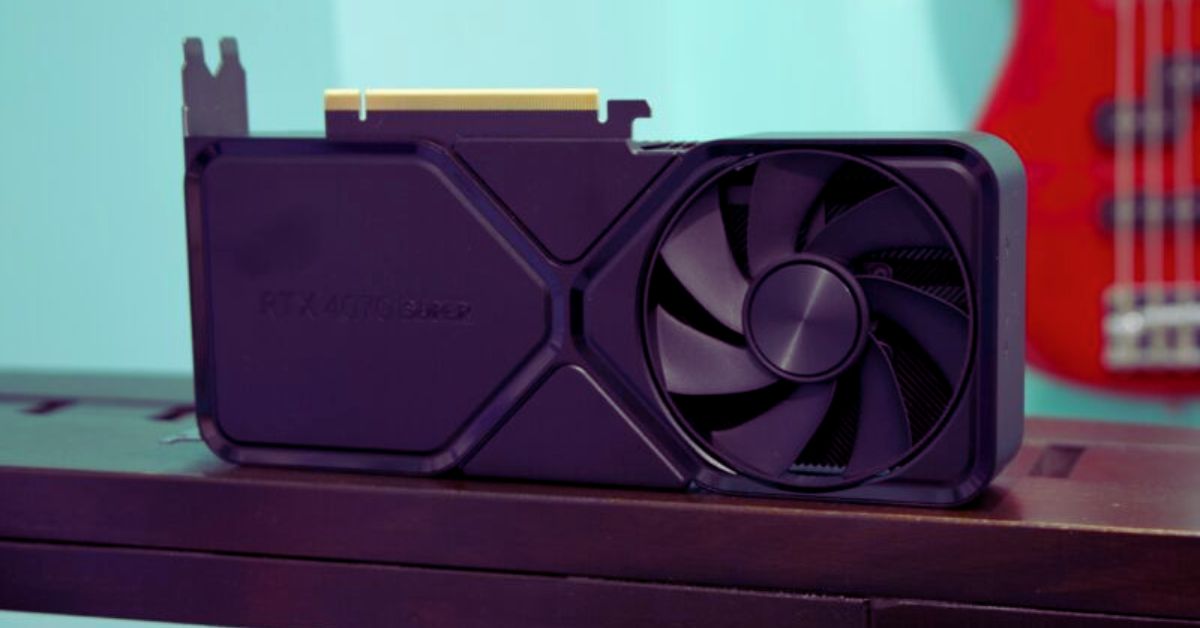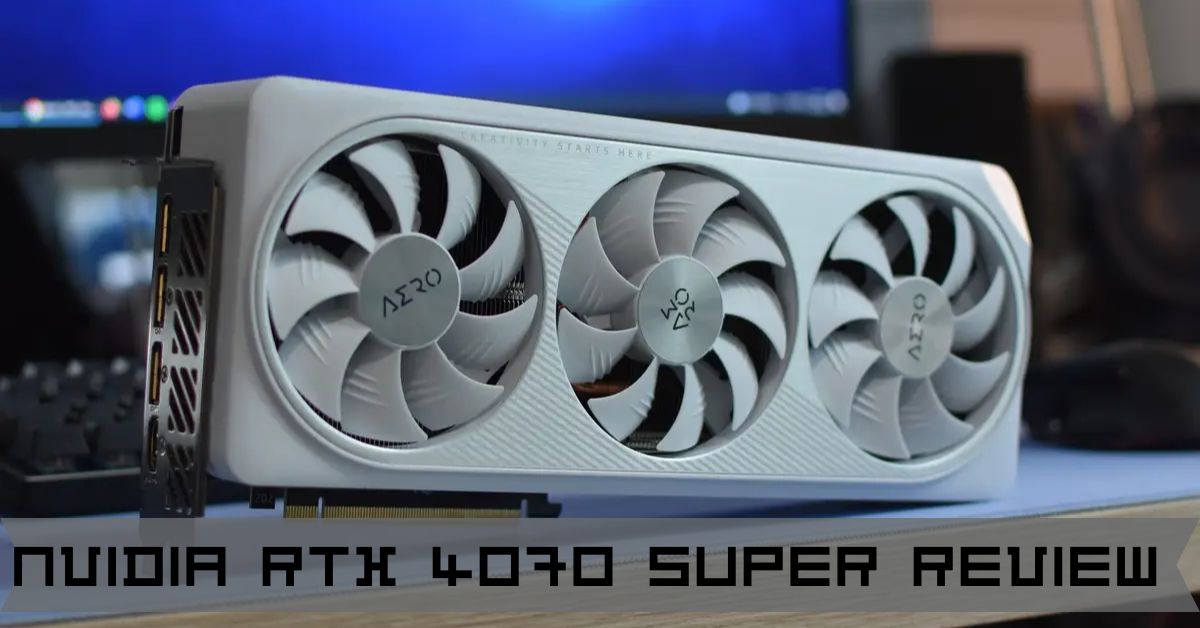Nvidia RTX 4070 Super Review: Based on Nvidia’s Ada Lovelace graphics microarchitecture, the RTX 4070 Super is identical to its predecessor, the RTX 4070, with the exception that it has more of it. A total of 7,168 Cuda Cores, 56 RT (ray tracing) cores, and 224 Tensor Cores make up the 56 Streaming Multiprocessors that comprise the graphics card.
Along with a jump from 200W to 220W in TGP (total graphics power), raw silicon has seen a 21% improvement. There is an increase to the RTX 4070 Super’s VRAM capacity and bandwidth as well. On a 192-bit bus, the GPU houses 12GB of GDDR6X VRAM, which clocks in at 10,500MHz.
Because of all of these improvements, the RTX 4070 Super is a full leap ahead of its predecessor, the RTX 4070. Since the next-gen RTX 5070 is unlikely to be released for at least another year, now is the perfect moment to buy a xx70 card if you have been waiting to do so.
The Founder’s Edition also has a somewhat different appearance. The RTX 4070 Super has the same silhouette as the original, but ditches the gray logo for a sleek black one. Though subtle, the improvement is noticeable, particularly for those who choose to display their graphics card in a vertical orientation.
In terms of ports, everything remains untouched. If you’re stuck using 8-pin PCI cables, Nvidia thankfully still includes an adaptor to merge two 8-pin power connectors into a single 16-pin one, so you may use the 16-pin 12VHPWR connector instead.
With its one HDMI 2.1 port and three DisplayPort 1.4 ports, the Nvidia RTX 4070 Super should be able to connect to virtually any display available. However, it would be great if Nvidia followed AMD’s lead and adopted the DisplayPort 2.1 connector.
Only then would I be able to power high-end displays like the Samsung Odyssey Neo G95 at their native resolution and refresh rate. The next generation will have to figure that out, though. As a last point, the cooling system is very similar to the other RTX 4000 graphics cards.
This arrangement uses a front-mounted fan and a rear-mounted fan to cool the graphics card from the bottom and exhaust hot air from the top of your computer case, as opposed to two fans on one side of the card.
Unfortunately, I haven’t observed a difference in CPU temps throughout all of my testing with graphics cards in this cooling configuration. This isn’t great news for your RAM or CPU, either.

Nvidia GeForce RTX 4070 Super – Performance
When it comes down to it, the Nvidia GeForce RTX 4070 Super really shines in 1440p and fast refresh rate gaming. In every single game in my testing suite, the graphics card easily defeated its predecessor, typically by a margin of around 10%. Even if it falls short of the RTX 4070 Ti, an RTX 4080 with less VRAM, this graphics card is still incredibly strong.
With 1440p, you can anticipate 90-100 frames per second in nearly any game you play. Using the Ray Tracing Ultra preset and DLSS on the Balanced setting, the RTX 4070 Super achieved an astounding 91 fps in Cyberpunk 2077, surpassing both the RTX 4070 and RTX 4070 Ti, which achieved 81 and 100 fps, respectively. You can call it high refresh rate gaming when you enable DLSS 3.0 Frame Generation, which further increases the number to 128 fps.
With 108 frames per second at 1440p in Total War: Warhammer 3, the RTX 4070 Super outperforms the RTX 4070 by 14% in the same test, proving its impressive performance even in games without DLSS support. At that rate, it can compete with the RTX 4070 Ti’s 116 frames per second.
Indeed, even with top-tier titles, the RTX 4070 Super’s speed justifies venturing into 4K gaming. I averaged a respectable 59 frames per second in Cyberpunk 2077 using DLSS 2.0. At that high resolution, it became very playable after I enabled Frame Generation, which increased the frame rate to 81 fps.
The RTX 4070 Super maintains its position as the top graphics card in its price range when tested using simulated benchmarks. The RTX 4070 Super outperforms its predecessor by 15% in 3DMark Speed Way and the Radeon RX 7700 XT by an astounding 42%; however, the latter is priced significantly lower at $449.
The RTX 4070 Super is noticeably faster than the RTX 4070 even in Blender, handling 3,645 samples per second in the Monster benchmark as opposed to 3,131. That’s an improvement of 16% as well.
All things considered, this is the kind of performance that the RTX 4070 should have offered when it was initially released in April 2023. We specifically requested this high-end 1440p and nearly 4K graphics card. Your $600 will go a bit further now, but it’s a shame it took this long to get here.
If you found this technological topic to be enjoyable, you might also be interested in the following:



